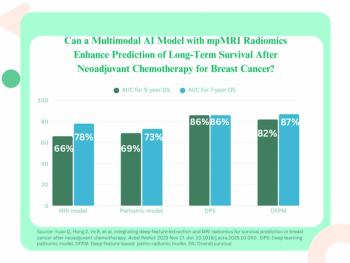
MRI During Chemotherapy IDs Subtypes of Breast Cancer
Magnetic resonance imaging (MRI) can be used to monitor response during neoadjuvant chemotherapy (NAC), and it is effective in triple-negative or human epidermal growth factor receptor 2 (HER2)-positive breast cancer, according to a study published online Jan. 10 in the Journal of Clinical Oncology.
THURSDAY, Jan. 13 (HealthDay News) -- Magnetic resonance imaging (MRI) can be used to monitor response during neoadjuvant chemotherapy (NAC), and it is effective in triple-negative or human epidermal growth factor receptor 2 (HER2)-positive breast cancer, according to a study published online Jan. 10 in the Journal of Clinical Oncology.
Claudette E. Loo, M.D., from the Netherlands Cancer Institute-Antoni van Leeuwenhoek Hospital in Amsterdam, and colleagues interpreted MRI results from 188 women before and after NAC. Tumors were categorized into subtypes: triple negative, HER2 positive, and estrogen receptor (ER) positive/HER2 negative. Tumor response was assessed by the presence or absence of residual tumor in the surgical specimen, and a continuous scale assessment represented relative change in the tumor stage.
The investigators found that residual tumors were present in 66 percent of triple-negative tumors, 61 percent of HER2-positive tumors, and 93 percent of ER-positive/HER2-negative tumors. A significant association was identified between breast cancer subtype and MRI findings.
Relative change in the tumor stage was correlated with breast cancer subtype, MRI, and age. This change was significant for triple-negative tumors and HER2-positive tumors. The presence of residual tumor in triple-negative tumors and HER2-positive tumors was significantly associated with the change in the largest tumor diameter of late MRI enhancement during NAC.
"Changes in MRI during neoadjuvant chemotherapy are predictive of pathology outcome only in triple-negative and HER2-positive tumors, but changes are less predictive in ER-positive/HER2-negative breast cancer," the authors write.
Copyright © 2011 HealthDay. All rights reserved.
Newsletter
Stay at the forefront of radiology with the Diagnostic Imaging newsletter, delivering the latest news, clinical insights, and imaging advancements for today’s radiologists.




























